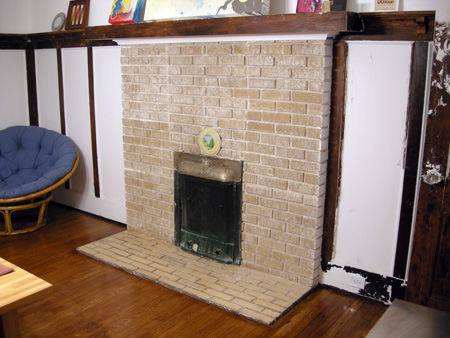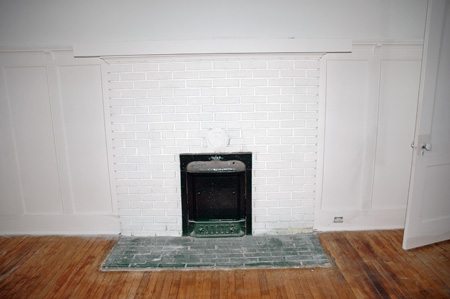We did it. We finally joined the composting culture.
Growing up in Germany composting was always such a natural thing. Just about everyone I knew had a little vegetable plot in their yard and a compost hidden somewhere in the corner of the garden. My parents always had a compost. Actually they must have been pretty serious because they had the three bin compost going on. I’m not sure what sparked my interest in wanting to do a compost here, but I told Patrick I thought it would be cool to start composting so we can have our own healthy earth for the garden. The space behind the garden shed seemed perfect because it will be pretty hidden back there. Patrick was game and ready to start. For that matter he was ready quicker than I was because he said “let’s just start a pile.” Being the German that I am I needed order I needed a box to contain the pile in. So even though we didn’t have a box yet we added scraps to a pile. But the compost didn’t really become official in my eyes until we built the box today!
After some internet research we determined the easiest way would be the stacking method. You put the legs an inch lower than the boards so that one can be stacked on top of the other:
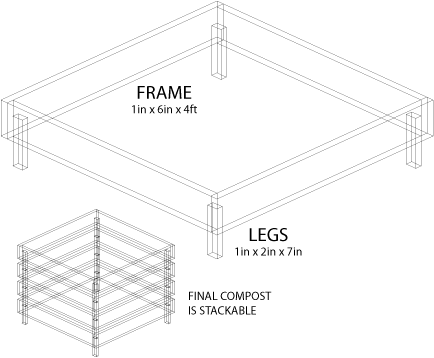
Patrick determined that even though it won’t be the cheapest method we should build it with cedar so it won’t weather as quickly. So off we went to the big box store and bought some 1″ x 6″ x 8′ cedar boards for the walls and 1″ x 2″ x 8′ for the supporting legs. Thankfully the big box store offers cutting, so we went ahead and got them cut in half (1″ x 6″ x 4′) so we wouldn’t have the extra work ourselves. The store had the super saw and was able to cut all eight boards in one go!
So here’s our pile of materials all ready to go!
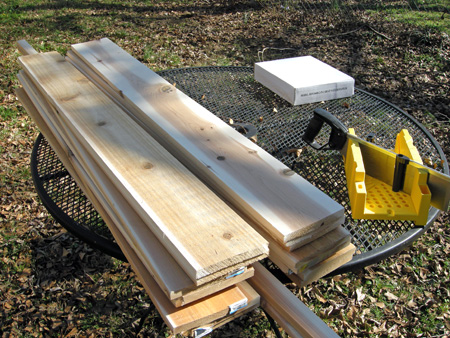
Step 1: Nail/screw together your boards to make a box.
Step 2: Cut the supporting legs into 7 inch pieces (1 inch larger than the boards to allow air flow). Attach legs to interior box walls.
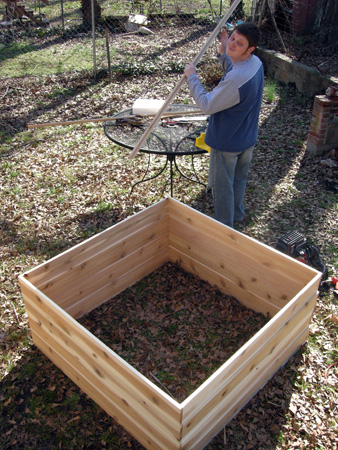
Step 3: Stack your boxes on top of one another over the started compost pile hidden behind the shed.
Step 4: Throw in some leaves that you haven’t cleaned since fall for good measure.
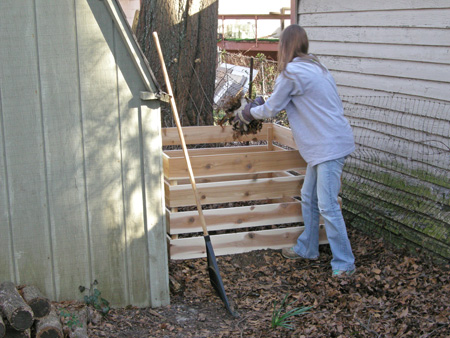
Step 5: Mix up the pile of kitchen waste and leaves.
Step 6: Keep adding to pile and repeat steps 3 through 6 until your waste turns into earth. (Or so we’re told.)
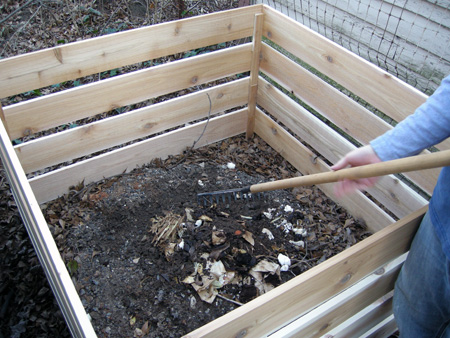
Since we’re composting virgins we’re obviously curious what our mess will turn out to be. I understand not too much will probably happen until the temperature goes up a bit more. We also bought one of those earth test kits. I haven’t actually used it yet. That way we’ll hopefully be able to find out what our compost pile will need most of to neutralize the existing earth in the garden. Wish us luck in our new venture!

